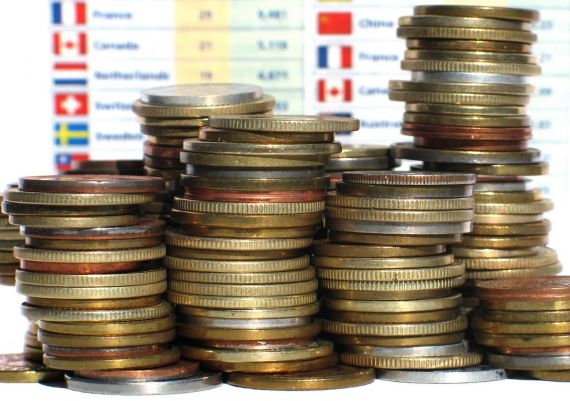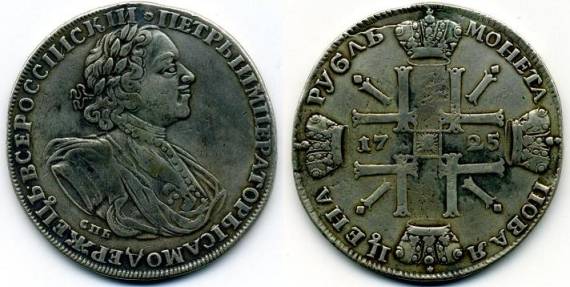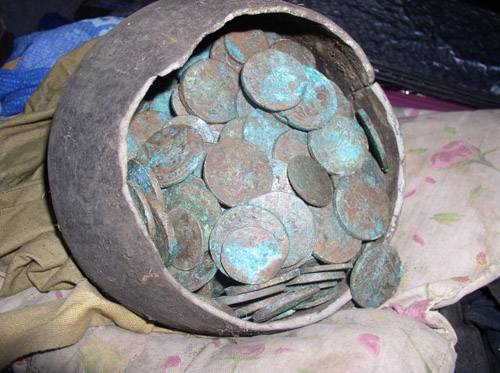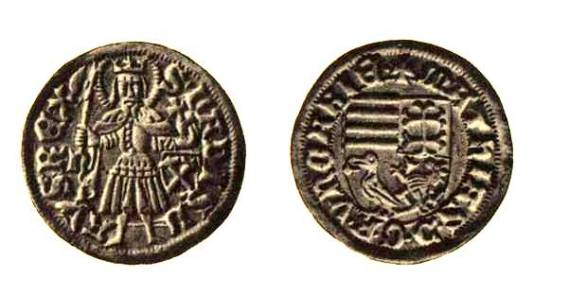What is now in price on the numismatic market
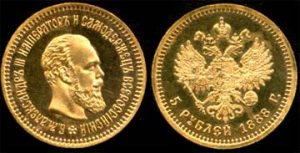 The dollar is falling, and the ruble is growing stronger. Especially – old. Antique coins are sold at auctions for “big money”. So, at the Gelos auction before the new year, for five gold rubles of Alexander III, coinage in 1888 was paid 150 thousand, and for a silver dime of 1741 of unique preservation – 90 thousand rubles. A set of two trial kopecks in 1871 of a copper-nickel alloy with a portrait of Alexander I was bought for 120 thousand rubles.
The dollar is falling, and the ruble is growing stronger. Especially – old. Antique coins are sold at auctions for “big money”. So, at the Gelos auction before the new year, for five gold rubles of Alexander III, coinage in 1888 was paid 150 thousand, and for a silver dime of 1741 of unique preservation – 90 thousand rubles. A set of two trial kopecks in 1871 of a copper-nickel alloy with a portrait of Alexander I was bought for 120 thousand rubles.
However, this is not the limit. Record is 120 thousand, but already dollars. For so much bought a trial silver ruble in 1806 at the auction of the antique salon “Catherine” in April last year. This is really a big rarity. Even Grand Duke George Mikhailovich, who possessed the largest collection of coins in Russia, had only one copy of it in the collection of the Imperial Hermitage …
Experts believe that in the world there are only two such unique silver rubles. For the first time a rare coin was sold at auction in 1913 for one thousand German marks.
Why are people willing to pay such old money for an old coin? In addition to the collective excitement, there is a calculation: this is an excellent investment. Prices for good numismatic collections are growing much faster than gold, antiques and diamonds. Rich people understood this. In Russia, only in the last five years, the so-called auction coins have risen by 3-4 times.
Even those Soviet copper coins, which we used to play in the first post-war years, can turn into a solid profit. True, there are lots of reservations. Expensive coin should be rare and in good condition. You need to understand the subject very well in order to properly invest. It is not for nothing that the “new numismatists” have ceased today to rely only on their own intuition and very superficial knowledge, and began to attract recognized experts to form their collections.
Another feature. If we analyze the collections exhibited at the latest numismatic auctions, it is easy to notice: 95 percent of lots are Russian and Soviet coins, and foreign ones in our country are not very popular.
Now about some subtleties. A good price is always assigned for trial coins (these are those that are printed before launching into a large series). About one ruble, we have already mentioned. Not so long ago, 3.8 thousand dollars paid for trial kopecks of the 1925 sample. Again, a trial of 50 kopecks in 1953 from aluminum (have you ever seen them?) Bought for 5 thousand dollars.
Particularly valued so-called “remakes”. These are rare coins of the XVII-XVIII centuries, which, by request of coin collectors, were already minted in the XIX century with old (original) stamps in very small quantities. Thus, a new trial of the trial ruble of 1827 was bought for 35 thousand dollars, and for a coin minted in several copies with a stamp of the trial Peter of Silver silver of 1699 (it never went into circulation), they set the price as much as 300 thousand dollars.
Valued by coin collectors and various “funny” coins. All of them have their own history, but they have one thing in common – small circulation and usually good preservation. These include 25 rubles. 1876, minted by order of Grand Prince Vladimir in the amount of 100 copies. For them in the autumn 2003 auction, “Catherine” paid 82 thousand dollars.
Increased interest in the “copper” – over the past couple of years, it rises in price much faster than silver and gold. Record among copper coins was a remake of “Sestroretskogo” ruble, whose weight is about a kilogram. He was bought for 50 thousand dollars. And here, for example, for gold Nikolaev chervonets give only 150-200 dollars – in the first years of Soviet power, they diverged, alas, in millions of copies.
Coins of the Russian Empire, issued for circulation in Poland and Finland, are very popular. So, for a set of ten Russian-Polish coins of Nicholas I in the original packaging and with a medal, stamped on the occasion of their minting, paid 120 thousand dollars, but silver stamps for Finland Alexander III are valued cheaper (about $ 1,000).
In general, if your child started suddenly to collect old coins, do not rush to dissuade him from this seemingly “petty” hobby. It will take half a life – and see which of you is right. Maybe by that time these coins will turn into a whole fortune.

